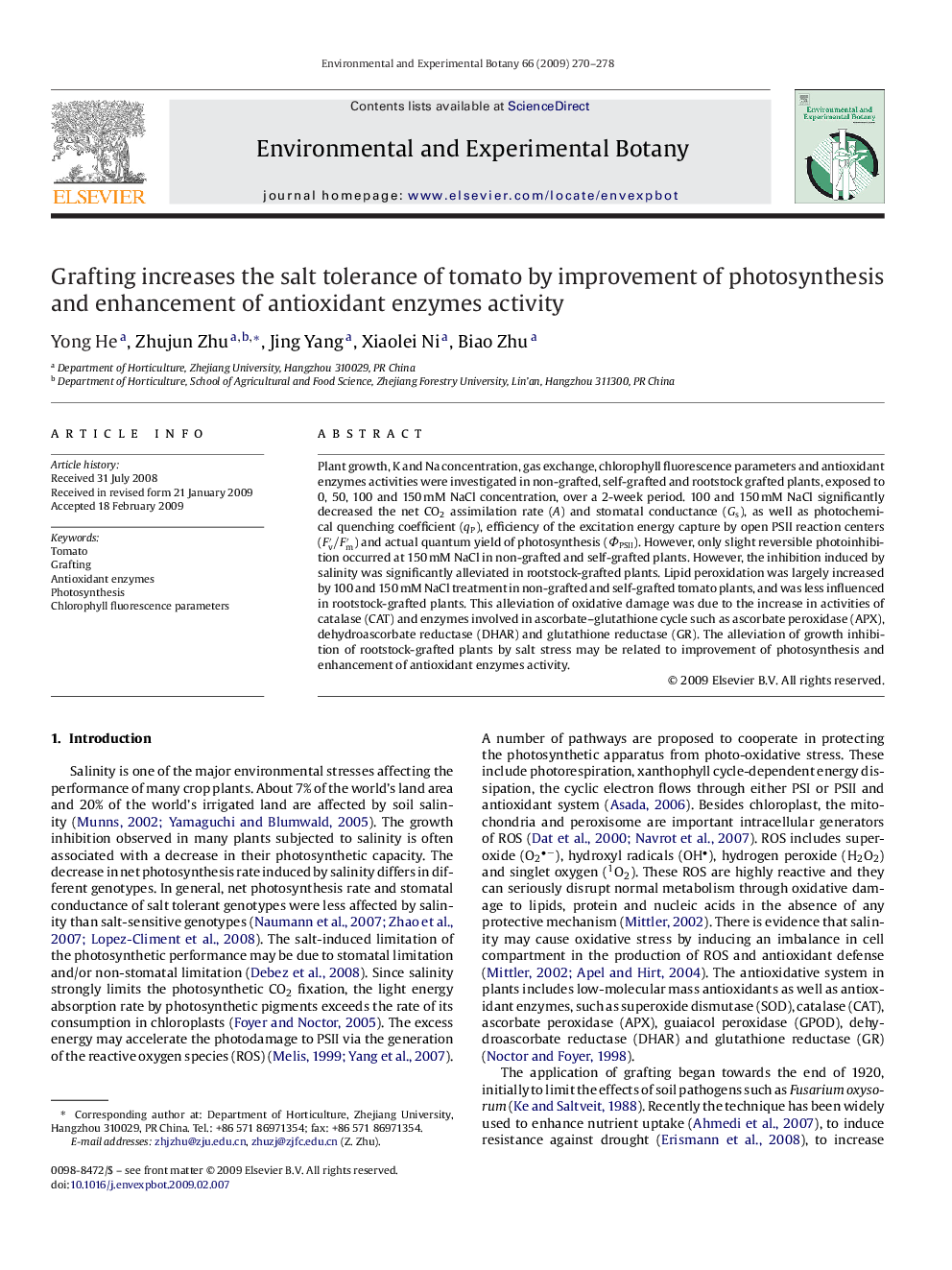| Article ID | Journal | Published Year | Pages | File Type |
|---|---|---|---|---|
| 4555122 | Environmental and Experimental Botany | 2009 | 9 Pages |
Plant growth, K and Na concentration, gas exchange, chlorophyll fluorescence parameters and antioxidant enzymes activities were investigated in non-grafted, self-grafted and rootstock grafted plants, exposed to 0, 50, 100 and 150 mM NaCl concentration, over a 2-week period. 100 and 150 mM NaCl significantly decreased the net CO2 assimilation rate (A) and stomatal conductance (Gs), as well as photochemical quenching coefficient (qP), efficiency of the excitation energy capture by open PSII reaction centers (F′v/F′m)(F′v/F′m) and actual quantum yield of photosynthesis (ΦPSII). However, only slight reversible photoinhibition occurred at 150 mM NaCl in non-grafted and self-grafted plants. However, the inhibition induced by salinity was significantly alleviated in rootstock-grafted plants. Lipid peroxidation was largely increased by 100 and 150 mM NaCl treatment in non-grafted and self-grafted tomato plants, and was less influenced in rootstock-grafted plants. This alleviation of oxidative damage was due to the increase in activities of catalase (CAT) and enzymes involved in ascorbate–glutathione cycle such as ascorbate peroxidase (APX), dehydroascorbate reductase (DHAR) and glutathione reductase (GR). The alleviation of growth inhibition of rootstock-grafted plants by salt stress may be related to improvement of photosynthesis and enhancement of antioxidant enzymes activity.
